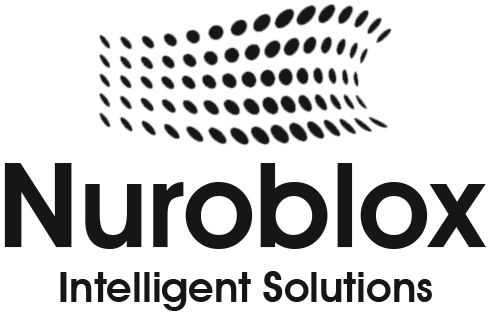How Insurers Use AI to Accelerate Claims and Improve Accuracy
Insurance claims have long been associated with complexity, delays, and paperwork. For customers, it’s often a stressful experience; for insurers, it’s a resource-intensive process. But that’s changing fast.
Thanks to Artificial Intelligence (AI), the insurance industry is undergoing a major transformation. AI technologies are streamlining claims processing, reducing human error, and enabling faster, more accurate decisions. From analyzing images of damaged vehicles to detecting fraudulent patterns in real time, AI is helping insurers deliver smarter, quicker, and more customer-friendly services.
In this blog, we’ll explore how AI is reshaping the claims landscape, the tools driving this innovation, and the real-world impact on insurers and policyholders alike.
The Role of AI in Modern Claims Workflows
Artificial Intelligence is no longer a futuristic concept in insurance; it’s a core component of modern claims workflows. By embedding AI into every stage of the claims lifecycle, insurers are achieving unprecedented levels of efficiency, accuracy, and customer satisfaction.
1. Claims Intake and Triage- AI-powered chatbots and virtual assistants handle initial claim submissions, guiding customers through the process and collecting relevant information. Natural Language Processing (NLP) enables these systems to understand and extract key data from documents, emails, and voice inputs, reducing manual entry and speeding up triage.
2. Damage Assessment and Validation- Computer vision and image recognition tools analyze photos and videos of damaged property or vehicles. These tools can estimate repair costs, detect inconsistencies, and even flag potential fraud. All within seconds. This automation allows adjusters to focus on complex cases while routine assessments are handled by AI.
3. Decision Support and Automation- Machine learning models evaluate claims based on historical data, policy details, and risk factors. They can recommend approval, denial, or escalation, helping adjusters make faster and more informed decisions. In some cases, low-risk claims are processed end-to-end without human intervention.
4. Fraud Detection- AI systems continuously monitor claims for suspicious patterns. By analyzing large datasets and learning from past fraud cases, these models can identify anomalies that might go unnoticed by human reviewers. This proactive approach significantly reduces fraudulent payouts.
5. Customer Communication and Updates- AI-driven platforms keep customers informed throughout the claims process. Automated notifications, personalized updates, and intelligent FAQs enhance transparency and reduce the need for manual follow-ups, improving overall customer experience.
Key Areas Where AI Accelerates Claims and Improves Accuracy
AI is transforming the insurance claims process by enhancing speed, precision, and scalability. Here are the key areas where AI is making the biggest impact:
1. Automated Claims Intake- AI-powered systems streamline the initial reporting of claims. Chatbots and virtual assistants guide customers through the process, collect relevant data, and validate information using Natural Language Processing (NLP). This reduces manual effort and ensures faster claim registration.
2. Image and Video Analysis- Computer vision technologies analyze photos and videos submitted by claimants to assess damage. Whether it’s a dented car or a flooded home, AI can estimate repair costs, detect inconsistencies, and even flag potential fraud all in real time.
3. Intelligent Document Processing- AI extracts and interprets data from scanned documents, emails, and handwritten notes. This eliminates the need for manual data entry and speeds up verification, especially in complex claims involving multiple documents.
4. Predictive Analytics for Claim Outcomes- Machine learning models analyze historical data to predict claim outcomes, settlement amounts, and processing times. This helps insurers prioritize claims, allocate resources efficiently, and improve customer satisfaction.
5. Fraud Detection and Risk Scoring- AI identifies suspicious patterns and anomalies by comparing current claims with historical fraud cases. Real-time risk scoring enables insurers to flag high-risk claims early, reducing losses and improving accuracy in decision-making.
6. Workflow Automation and Decision Support- AI automates routine tasks such as assigning claims to adjusters, scheduling inspections, and generating reports. Decision support systems provide adjusters with recommendations based on data-driven insights, improving consistency and reducing human error.
7. Personalized Customer Communication- AI-driven platforms send timely updates, answer queries, and provide status notifications throughout the claims process. This enhances transparency and builds trust with policyholders.
Real-World Examples and Case Studies
AI adoption in insurance is no longer experimental; it’s delivering measurable results across the claims lifecycle. Here are some standout examples of how insurers are using AI to accelerate claims and improve accuracy:
1. Lemonade: End-to-End AI Claims Processing- Lemonade, a digital-first insurer, uses AI to handle claims from start to finish. Its AI chatbot “Jim” can process simple claims in minutes by collecting information, analyzing photos, and issuing payments all without human intervention. This has drastically reduced turnaround times and improved customer satisfaction
2. Allstate: Image Recognition for Auto Claims- Allstate leverages computer vision to assess vehicle damage from customer-submitted photos. The AI estimates repair costs and helps adjusters make faster decisions. This has led to quicker settlements and reduced manual workload for claims teams
3. Zurich Insurance: AI-Powered Fraud Detection- Zurich uses machine learning to detect fraudulent claims by analyzing patterns across historical data. The system flags anomalies and assigns risk scores, allowing investigators to focus on high-risk cases. This proactive approach has significantly reduced fraud-related losses.
4. AXA: NLP for Document Processing- AXA employs Natural Language Processing (NLP) to extract and validate data from claims documents. This automation speeds up processing and reduces errors, especially in complex claims involving multiple documents
5. Tokio Marine: AI in Catastrophe Claims- During natural disasters, Tokio Marine uses AI to triage claims and prioritize those needing urgent attention. AI models analyze satellite imagery and customer data to assess damage and allocate resources efficiently
These examples highlight how AI is not just enhancing operational efficiency but also transforming customer experience and risk management in insurance.
Conclusion
AI is reshaping insurance claims by making them faster, smarter, and more accurate. From automating intake to detecting fraud and supporting decision-making, AI helps insurers improve efficiency and deliver better customer experiences. As adoption grows, those who embrace AI thoughtfully will lead the way in building trust and driving innovation in the industry.


